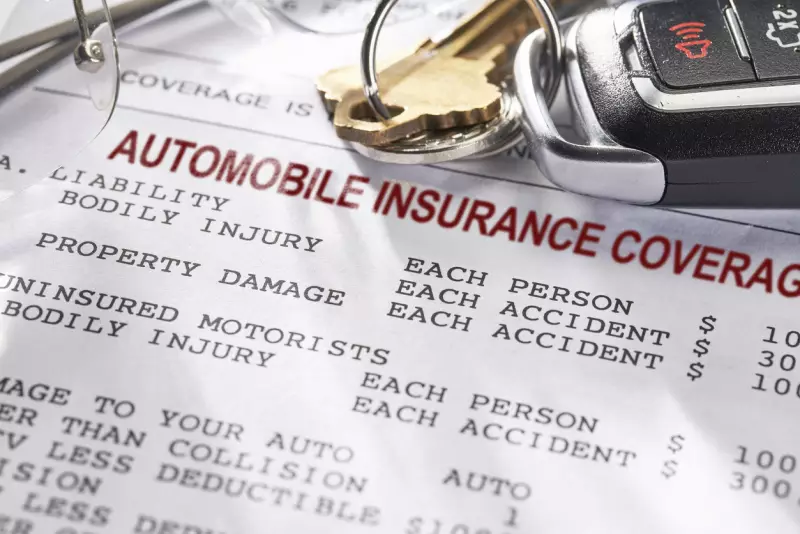When people imagine a vehicle accident, they usually have two or more vehicles crashing or colliding in mind. However, some car accidents can be more complex than that. For instance, a phantom driver leaves little or no evidence in a miss or run accident. Hence, proving that the phantom driver's negligence caused the accident may be difficult.
Despite the challenges of proving negligence on the phantom's driver, you can still obtain compensation for a crash by filing an uninsured motorist claim with your insurance company.
What Is a Phantom Vehicle?
A phantom car is a term used in the insurance industry to refer to a car causing an accident without physical contact with the other vehicle or its driver. A phantom car leaves the accident scene after causing a crash, making it difficult to prove fault and get compensation except in instances where one or more witnesses come forward, or physical evidence is found.
What Is a Phantom Vehicle Accident?
Sometimes called miss-and-run accidents, phantom vehicle accidents occur when a driver's sudden or reckless movement causes another driver to hit a car or run off the road. For instance, a vehicle weaving through traffic at top speed and suddenly stopping may cause a phantom car accident. In extreme cases, phantom cars purposefully run other vehicles off the road.
How To Prove a Phantom Vehicle Accident
To prove a phantom vehicle accident, you must be able to show evidence that the other driver was negligent. You need facts to prove that the other driver should be liable for losses or injuries.
Firstly, after a car accident you should contact law enforcement immediately after a phantom vehicle accident. If you file a case in court, a police report can go a long way in proving that the other driver was at fault in the accident. Police reports are highly regarded in court as they are considered to be from a neutral third party with no stake in the case. The report can help prove the accident's date, time, and location. It can also be useful in identifying the parties involved and witnesses at the scene of the accident.
If other motorists who have witnessed the accident stop, you can speak with them to see if they saw the phantom vehicle or can help with other details that may be useful. Eyewitness accounts from neutral third parties can be persuasive in court. You should also take photos and videos after the accident if you can. Include images of your vehicle, the environment, and vehicles and persons nearby. If you cannot take photographs and videos, you can ask a third party, such as a passenger from your car or a witness, to help gather information. After gathering evidence, you may report the car accident to your insurance company.
Insurance Coverage For Phantom Vehicle Accidents

Insurance coverage for phantom vehicle accidents falls under uninsured motorist (UIM) coverage. When filing a UIM claim for a phantom vehicle accident, follow these steps:
- Review your insurance policy: Prior to filing a UIM claim for a phantom car accident, review your current coverage to ensure it covers injuries and damages caused by phantom vehicle accidents. You may be able to find specific steps required to file a claim and the documentation required.
- Gather information about the accident: Gather as much information as possible about the accident, such as photos of the damage to your vehicle, police report, and other eyewitness information that may be helpful.
- Report the incident to your insurance company: Report the phantom car accident to your insurance company immediately. The insurance company will decide if you can file an uninsured motorist claim.
- File an uninsured motorist claim: If your insurance company determines your eligibility for a UIM claim, they will guide you through the filing process. However, you may need other documentation, such as medical bills or car repair receipts. Follow your insurance company's guidance carefully to ensure the UIM claim is processed appropriately.
- Wait for a decision: After filing your claim, your insurance company will review it and make a decision. Depending on the complexity of the case, it may take several months after filing the claim for it to come to a head.
Dealing With Denials
Insurance companies sometimes look for ways to avoid paying phantom vehicle accident claims. If you have received a denial letter from your insurance company, you should review the letter to determine the reason for the denial. Potential reasons why your claim may be denied include a lapse in coverage, no coverage, untimely filing of the claim, medical records not supporting the injuries claimed, errors on the claim documents, the claim amount exceeding the maximum amount of coverage, claimant being at fault or causing the accident, injuries relating to a pre-existing condition, no documented injuries or damages, or lack of proof of liability.
However, if you believe your claim has been wrongly denied, you should collect evidence supporting your position (photos, videos, and eyewitness statements) and submit a formal appeal to the insurance company. Include the supporting evidence that you have gathered in your formal appeal. You may also consider seeking guidance from your state department of insurance.
Also, due to the complexities of dealing with insurance companies, you may hire an experienced insurance attorney to help you navigate the process, negotiate, and pursue legal remedies, such as filing a lawsuit if necessary. Some insurance companies may be willing to negotiate a fair settlement after you have filed a lawsuit.
Preventative Measures and Safety Tips
In order to limit the risk of phantom vehicle accidents, consider adopting the following preventive and safety tips:
- Be alert: You must stay vigilant while driving and pay close attention to your driving environment. Scan the road ahead and regularly check your mirrors for signs of approaching vehicles. Also, exercise more caution in winter and while driving in the rain. Rain often creates slick surfaces that may be challenging to drive in, while drivers may find it difficult to see and in snowy conditions. These challenges can be hard to navigate for teenagers or adults who do not know the proper protocols. You should keep an extra distance between the car in front of you in such conditions, go easy on the brakes at stops, and drive at low speeds. Do not slam on the brakes if you hit ice while driving in snowy conditions.
- Maintain a safe following distance: Try to keep a safe distance between your vehicle and the one ahead of you in order to allow for sufficient reaction time in case of sudden maneuvers or emergencies.
- Use turn signals and headlights: Signal your intentions clearly by using your turn signals when changing lanes or making turns. Keep your headlights on, especially during low visibility conditions or when driving at night, to increase your vehicle's visibility to others.
- Avoid distractions: You should minimize distractions while driving so that you can react quickly to potential hazards on the road. Avoid distractions like using electronic devices, eating, or adjusting the radio while driving.
- Exercise caution at intersections: Be cautious when approaching intersections and be ready to yield the right-of-way if necessary. Look both ways before proceeding, even if you have the right-of-way, to ensure no vehicles are approaching unexpectedly.
- Install dash cams: Consider installing a rear-view mirror camera in your vehicle to capture footage of the driving environment. A rear-view mirror camera can provide valuable evidence in cases of phantom car accidents.
- Report suspicious activity: If you encounter a vehicle behaving erratically on the road, such as swerving in and out of lanes or driving recklessly, report it to the authorities. Providing information about the vehicle's description, license plate number, and location can help prevent potential phantom vehicle accidents.
Conclusion
A phantom car accident occurs when a vehicle causes another vehicle to crash despite not colliding with it. For example, you may drive in the right lane when a vehicle suddenly enters in front of your car. Consequently, in trying to avoid a collision, you swerve and strike the guardrail.
These incidents make determining fault and obtaining compensation challenging, particularly when witnesses or physical evidence are scarce. Proving fault in phantom vehicle accidents requires gathering evidence, including police reports, eyewitness accounts, and documentation of the scene through photos or videos.
Insurance coverage for phantom vehicle accidents typically falls under uninsured motorist (UIM) coverage. To file a UIM claim, you should review their insurance policy, gather relevant information about the accident, report the incident to your insurance company, and file the claim according to your insurer's guidelines. However, claim denials are not uncommon, and you may need to appeal the decision or seek legal assistance to pursue fair compensation.
Preventive measures and safety tips can help mitigate the risk of phantom car accidents. These include staying alert while driving, maintaining a safe following distance, using turn signals and headlights effectively, avoiding distractions, exercising caution at intersections, installing dash cams for evidence collection, and reporting suspicious activity to authorities. By adopting these measures, you can enhance your safety on the road and minimize the likelihood of being involved in phantom car accidents.








![Best Sites to Check a Car’s History [2025 Review]](https://media.infopay.net/thumbnails/K8lMeG2QLjE46LPqZlmoi6SunKKdT5qvlaRZk6e1.webp)










![Best Sites to Check a Car’s History [2025 Review]](https://media.infopay.net/thumbnails/K8lMeG2QLjE46LPqZlmoi6SunKKdT5qvlaRZk6e1-w356.webp)
